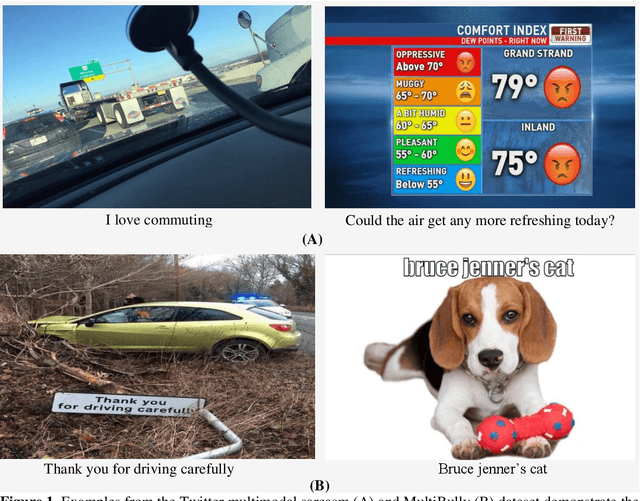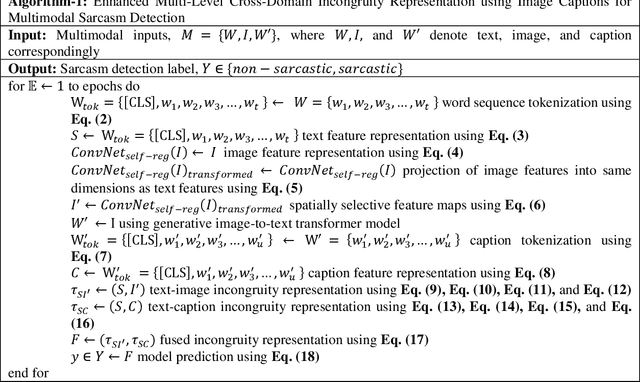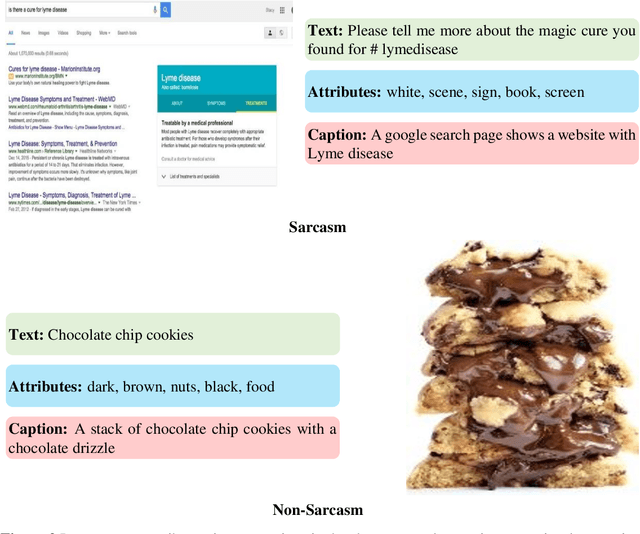Modelling Visual Semantics via Image Captioning to extract Enhanced Multi-Level Cross-Modal Semantic Incongruity Representation with Attention for Multimodal Sarcasm Detection
Paper and Code
Aug 05, 2024



Sarcasm is a type of irony, characterized by an inherent mismatch between the literal interpretation and the intended connotation. Though sarcasm detection in text has been extensively studied, there are situations in which textual input alone might be insufficient to perceive sarcasm. The inclusion of additional contextual cues, such as images, is essential to recognize sarcasm in social media data effectively. This study presents a novel framework for multimodal sarcasm detection that can process input triplets. Two components of these triplets comprise the input text and its associated image, as provided in the datasets. Additionally, a supplementary modality is introduced in the form of descriptive image captions. The motivation behind incorporating this visual semantic representation is to more accurately capture the discrepancies between the textual and visual content, which are fundamental to the sarcasm detection task. The primary contributions of this study are: (1) a robust textual feature extraction branch that utilizes a cross-lingual language model; (2) a visual feature extraction branch that incorporates a self-regulated residual ConvNet integrated with a lightweight spatially aware attention module; (3) an additional modality in the form of image captions generated using an encoder-decoder architecture capable of reading text embedded in images; (4) distinct attention modules to effectively identify the incongruities between the text and two levels of image representations; (5) multi-level cross-domain semantic incongruity representation achieved through feature fusion. Compared with cutting-edge baselines, the proposed model achieves the best accuracy of 92.89% and 64.48%, respectively, on the Twitter multimodal sarcasm and MultiBully datasets.
 Add to Chrome
Add to Chrome Add to Firefox
Add to Firefox Add to Edge
Add to Edge